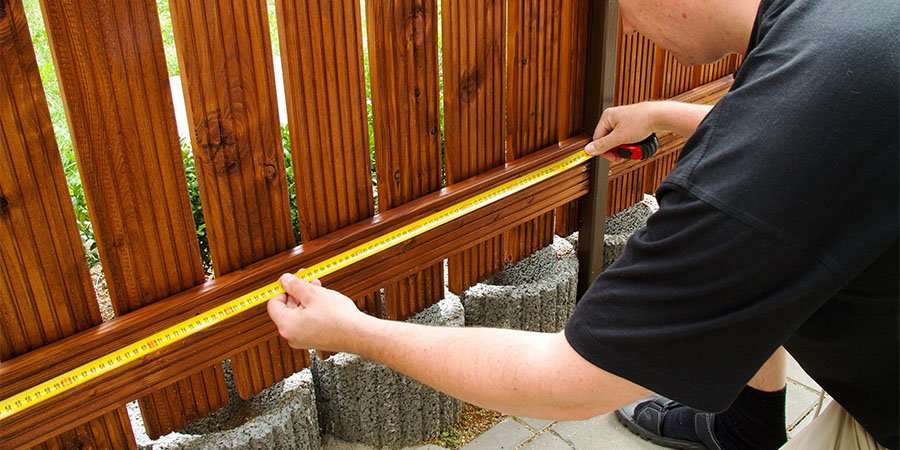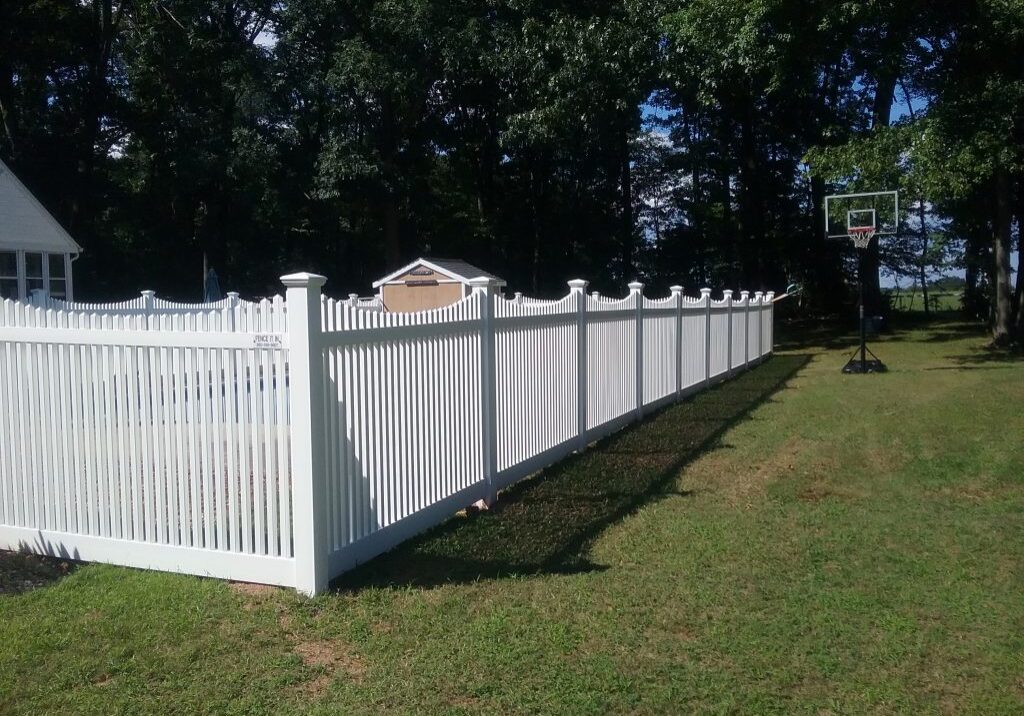All Categories
Featured
Maintaining your fencing is crucial to guarantee its appearance, longevity, and performance. Whether your fencing is made of wood, vinyl, steel, or other products, comprehending its treatment requirements will certainly aid maintain it in ideal condition.
![]()
Cleansing: Use a pressure washer or soapy water with a soft brush to get rid of dirt, mildew, and algae. This must be done every year or biannually. Securing and discoloring: Use a sealer or tarnish every 2-- 3 years to stop moisture damage and UV fading. Select a premium item appropriate for outdoor usage. Repair work: Change warped, decomposed, or fractured boards immediately to stay clear of more damages. Parasite Administration: Treat with a wood preservative to protect against termites and various other parasites. 2. Vinyl Fencings. Vinyl fencings are prominent for their low-maintenance nature but still call for some maintenance.
Cleansing: Wash the fence with a mix of water and light cleaning agent using a soft sponge or fabric. Stay clear of unpleasant cleansers that might scratch the surface. Examinations: Examine for spaces or splits occasionally, specifically after storms. Vinyl can end up being breakable in very chilly weather. Stopping Staining: Remove spots promptly. For tough spots, utilize a vinegar option or a vinyl-safe cleansing agent. 3. Chain-Link Fences. Chain-link fences are functional and long lasting, usually utilized for safety and security and boundary noting.
Corrosion Elimination: Inspect for rust on a regular basis, particularly in coastal or damp locations. Remove corrosion with a wire brush and use a rust-proof coating. Cleansing: Rinse with water to eliminate dirt and particles. Utilize a scrub brush for locations with hefty buildup. Tightening and Repair Works: Ensure the web links and blog posts continue to be limited. Change damaged sections or equipment as needed. 4. Wrought Iron Fencings. Wrought iron provides an elegant appearance but needs consistent interest to stop corrosion and maintain its coating.
Corrosion Prevention: Sand off any corrosion places and use a rust-resistant guide and paint. This must be done every year or as needed. Cleansing: Use a light soap remedy and a soft towel or sponge to remove dust. Prevent rough chemicals that can harm the metal. Paint: Reapply paint every couple of years to safeguard the iron and enhance its look. 5. Aluminum Fences. Aluminum fences are light-weight, corrosion-resistant, and call for marginal care.
![]()
Cleansing: Use soapy water and a towel to cleanse the fencing, rinsing thoroughly to stay clear of streaks. Examinations: Inspect for loose screws or panels occasionally. If essential, secure or replace parts. Touch-Ups: Use paint created for aluminum to cover any scratches or chips, protecting the metal beneath. 6. Composite Fences. Compound fence is constructed from recycled materials, incorporating the look of timber with higher toughness.
Cleaning: Wash with water and use a mild detergent to eliminate dust and discolorations. Prevent unpleasant devices that might harm the composite surface area. Examinations: Look for signs of warping or splitting, especially in areas with severe temperature level modifications. Mold Avoidance: Clean mold or mold promptly with a blend of water and white vinegar. 7. Bamboo Fences. Bamboo fencing is eco-friendly but a lot more fragile than other materials.
Cleansing: Utilize a soft brush with soapy water to clean dirt and particles. Prevent using excessive water pressure to stop splitting. Securing: Use a waterproof sealer every 2-- 3 years to secure against weather damage. Fixings: Change split or damaged bamboo posts as needed to maintain the framework and look. General Upkeep Tips. Trim Plants: Keep bushes and creeping plants away from the fence to avoid dampness build-up and damages. Seasonal Treatment: In winter months, clear snow accumulation from fencings to stay clear of tension on the framework. In summer season, check for sun damage or fading. Normal Assessments: Walk along the fencing line occasionally to inspect for loose equipment, leaning areas, or other indicators of wear. Final thought. No matter the sort of secure fencing product, regular upkeep is the key to preserving its feature and visual appeals. Wooden fencings demand the most upkeep, while plastic and light weight aluminum need less effort but still advantage from routine cleaning and assessments. By addressing small concerns early and performing regular treatment, you'll enjoy a fencing that remains eye-catching and tough for many years ahead.

- Wood Fencings. Wooden fencings are classic but call for routine like protect against weather and insects.
Cleansing: Use a pressure washer or soapy water with a soft brush to get rid of dirt, mildew, and algae. This must be done every year or biannually. Securing and discoloring: Use a sealer or tarnish every 2-- 3 years to stop moisture damage and UV fading. Select a premium item appropriate for outdoor usage. Repair work: Change warped, decomposed, or fractured boards immediately to stay clear of more damages. Parasite Administration: Treat with a wood preservative to protect against termites and various other parasites. 2. Vinyl Fencings. Vinyl fencings are prominent for their low-maintenance nature but still call for some maintenance.
Cleansing: Wash the fence with a mix of water and light cleaning agent using a soft sponge or fabric. Stay clear of unpleasant cleansers that might scratch the surface. Examinations: Examine for spaces or splits occasionally, specifically after storms. Vinyl can end up being breakable in very chilly weather. Stopping Staining: Remove spots promptly. For tough spots, utilize a vinegar option or a vinyl-safe cleansing agent. 3. Chain-Link Fences. Chain-link fences are functional and long lasting, usually utilized for safety and security and boundary noting.
Corrosion Elimination: Inspect for rust on a regular basis, particularly in coastal or damp locations. Remove corrosion with a wire brush and use a rust-proof coating. Cleansing: Rinse with water to eliminate dirt and particles. Utilize a scrub brush for locations with hefty buildup. Tightening and Repair Works: Ensure the web links and blog posts continue to be limited. Change damaged sections or equipment as needed. 4. Wrought Iron Fencings. Wrought iron provides an elegant appearance but needs consistent interest to stop corrosion and maintain its coating.
Corrosion Prevention: Sand off any corrosion places and use a rust-resistant guide and paint. This must be done every year or as needed. Cleansing: Use a light soap remedy and a soft towel or sponge to remove dust. Prevent rough chemicals that can harm the metal. Paint: Reapply paint every couple of years to safeguard the iron and enhance its look. 5. Aluminum Fences. Aluminum fences are light-weight, corrosion-resistant, and call for marginal care.

Cleansing: Use soapy water and a towel to cleanse the fencing, rinsing thoroughly to stay clear of streaks. Examinations: Inspect for loose screws or panels occasionally. If essential, secure or replace parts. Touch-Ups: Use paint created for aluminum to cover any scratches or chips, protecting the metal beneath. 6. Composite Fences. Compound fence is constructed from recycled materials, incorporating the look of timber with higher toughness.
Cleaning: Wash with water and use a mild detergent to eliminate dust and discolorations. Prevent unpleasant devices that might harm the composite surface area. Examinations: Look for signs of warping or splitting, especially in areas with severe temperature level modifications. Mold Avoidance: Clean mold or mold promptly with a blend of water and white vinegar. 7. Bamboo Fences. Bamboo fencing is eco-friendly but a lot more fragile than other materials.
Cleansing: Utilize a soft brush with soapy water to clean dirt and particles. Prevent using excessive water pressure to stop splitting. Securing: Use a waterproof sealer every 2-- 3 years to secure against weather damage. Fixings: Change split or damaged bamboo posts as needed to maintain the framework and look. General Upkeep Tips. Trim Plants: Keep bushes and creeping plants away from the fence to avoid dampness build-up and damages. Seasonal Treatment: In winter months, clear snow accumulation from fencings to stay clear of tension on the framework. In summer season, check for sun damage or fading. Normal Assessments: Walk along the fencing line occasionally to inspect for loose equipment, leaning areas, or other indicators of wear. Final thought. No matter the sort of secure fencing product, regular upkeep is the key to preserving its feature and visual appeals. Wooden fencings demand the most upkeep, while plastic and light weight aluminum need less effort but still advantage from routine cleaning and assessments. By addressing small concerns early and performing regular treatment, you'll enjoy a fencing that remains eye-catching and tough for many years ahead.
Latest Posts
Discover Outstanding Vehicle Maintenance Care in Chicago – Drive with Confidence
Published May 27, 25
1 min read
Uncover Cost-Effective Auto Repairs with Montclare’s Limited-Time Service Specials
Published May 26, 25
1 min read
Find Brake Repair & More: Complete Services Guide from Montclare Auto Repair
Published May 26, 25
1 min read
More
Latest Posts
Discover Outstanding Vehicle Maintenance Care in Chicago – Drive with Confidence
Published May 27, 25
1 min read
Uncover Cost-Effective Auto Repairs with Montclare’s Limited-Time Service Specials
Published May 26, 25
1 min read
Find Brake Repair & More: Complete Services Guide from Montclare Auto Repair
Published May 26, 25
1 min read